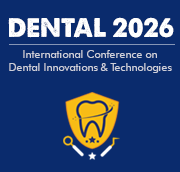Dentine Hypersensitivity
Dentin hypersensitivity is a common dental health problem for many individuals. It is characterized by short, sharp pain in response to stimuli such as cold, sweet, or sour food or beverages, air, or even brushing. The pain is caused by the exposure of the nerve endings in the dentin layer of the tooth. Dentin is found beneath the enamel and cementum of the tooth, and it contains thousands of tiny nerve endings. These nerve endings can be stimulated when the dentin is exposed due to receding gums, dental erosion, or worn enamel. When that happens, a person can experience sharp and uncomfortable sensitivity. People most likely to experience dentin hypersensitivity are those who have worn enamel, gingivitis or periodontitis, gum recession, and high levels of acidity in the mouth from a poor diet. The pain from dentin hypersensitivity is usually temporary, but the underlying cause should still be addressed. Fortunately, there are treatments available to help manage dentin hypersensitivity. The most effective treatment is a fluoride agent that reorganizes the dentin and blocks exposed tubules, thereby reducing the transmission of the sensation of pain. Some over the counter rinses, toothpastes, and creams also contain ingredients such as potassium nitrate or strontium chloride, which are meant to desensitize the nerve endings. For more severe cases, a dentist may recommend a dental bonding procedure or veneer to treat exposed dentin. In addition, the dentist may suggest avoiding acidic foods that corrode the enamel, and they may recommend the patient wear a night guard during sleep to protect the teeth from grinding forces. Dentin hypersensitivity can be excruciating, but with the right combination of at-home treatments and professional care, it doesn't have to be a lingering part of life. From routine cleanings to professional fluoride treatments, there are a number of ways to understand, manage, and minimize dentin sensitivity.

David Geoffrey Gillam
Queen Mary University of London, United Kingdom
Zvi Loewy
New York Medical College, United States
Khamis A Hassan
Global Dental Research Centre, Canada
Laurindo Moacir Sassi
Erasto Gaertner Hospital Cancer Center and Mackenzie Evangelical University Hospital, Brazil
Arnaldo Castellucci
Dr. Castellucci MD, DDS, Italy
Yasser Khaled
Marquette University, United States



Title : Efficacy of a biomin F toothpaste compared to conventional toothpastes in remineralisation and dentine hypersensitivity: An overview
David Geoffrey Gillam, Queen Mary University of London, United Kingdom
Title : Knowledge and attitudes of dental professionals in the evaluation of Molar Incisor Hypomineralisation (MIH): Awareness, diagnosis and treatment approaches: An overview
David Geoffrey Gillam, Queen Mary University of London, United Kingdom
Title : The coordinated triad of spatial temporal and biomechanical strategies managing the where when and how of shrinkage stress in bulk fill resin composite restorations
Khamis A Hassan, Global Dental Research Centre, Canada
Title : Dental treatment of 1500 young children under general anesthesia
Jaap Boehmer, Rijnstate Hospital, Netherlands
Title : Enhancing root canal success strategic use of orifice opener one step synthesis gels orifice barriers
Emmanuel Samson, Consultant Total Dental Care, India
Title : Importance of clinical pharmacokinetics of medications in the postoperative period of patients undergoing dental surgical procedures
Vitoldo Antonio Kozlowski Junior, Ponta Grossa State University, Brazil